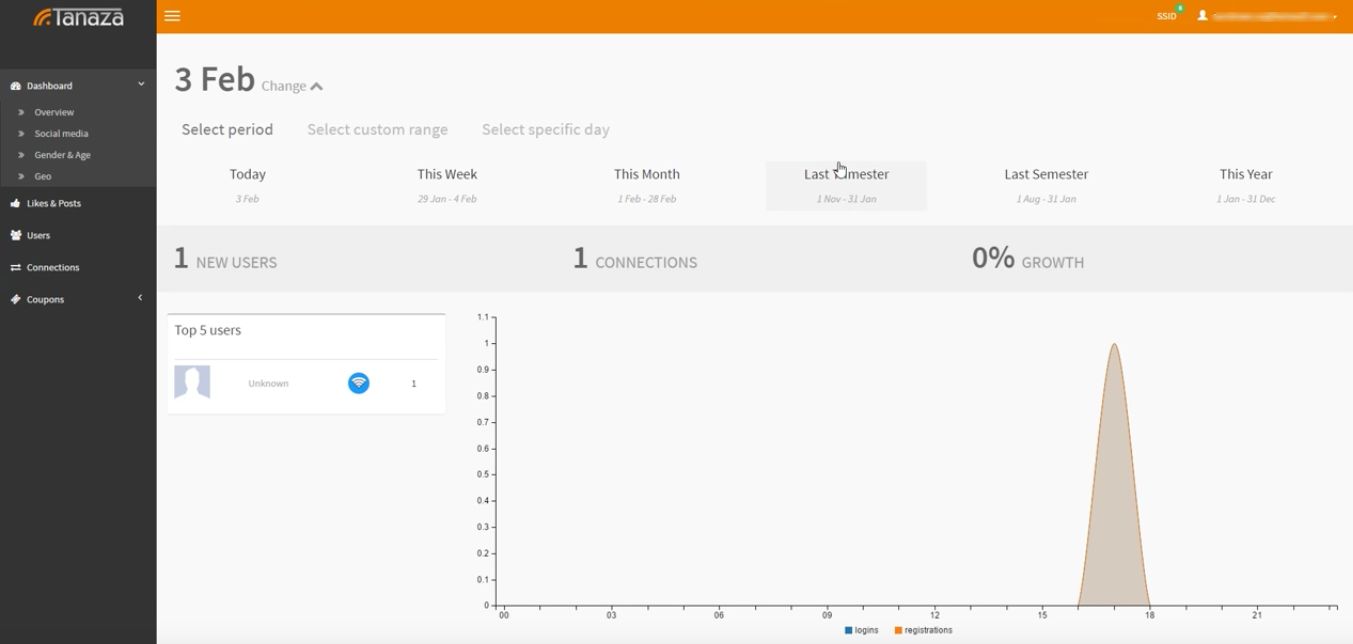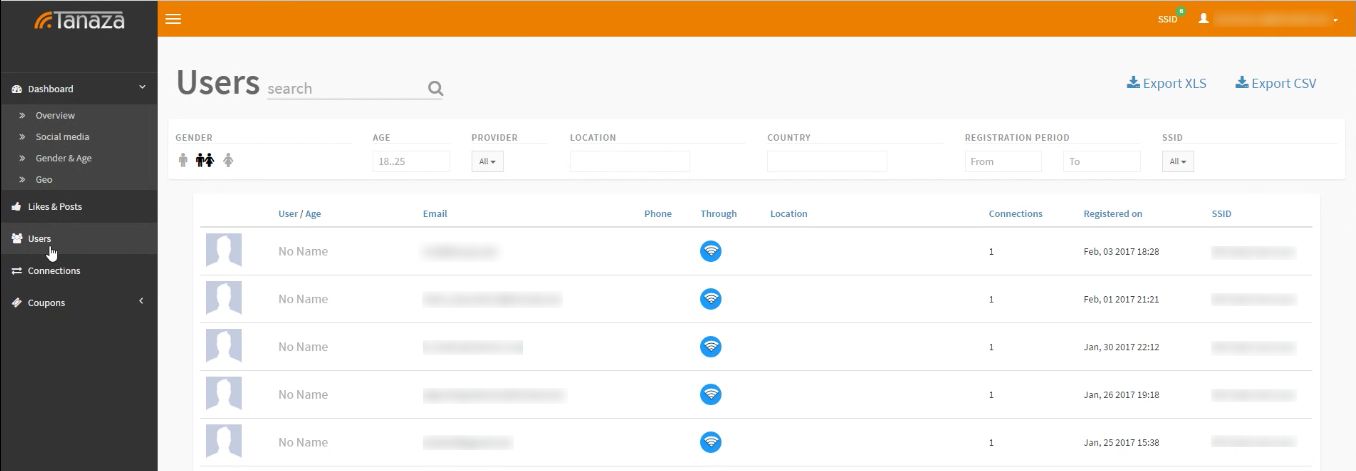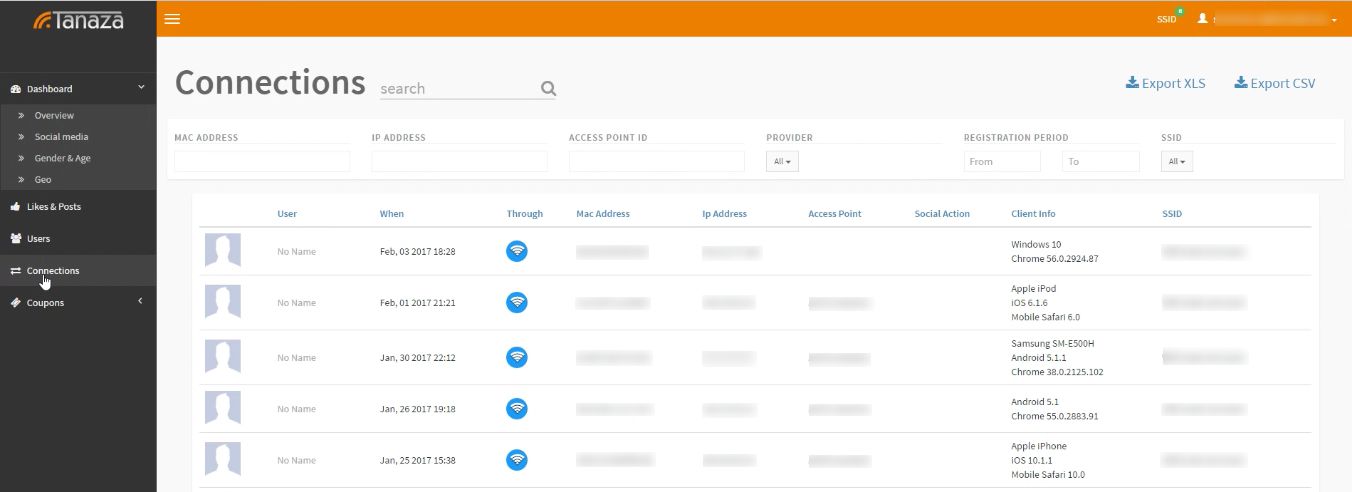How to make the most of your public Wi-Fi hotspot data

But how can you incentivize people to connect to your free Wi-Fi hotspot? And once they do, how can you effectively analyze your public Wi-Fi hotspot data? Let’s find it out in this post.
Where is your Wi-Fi network located?
You should first and foremost consider the best place where to deploy your wireless network. Public venues with a high foot traffic, such as shopping malls or retail stores, are the ideal choice. Indeed, customers easily flock to these locations, especially during the weekends. A smart tip: make customers comfortable while they enjoy your connection. Your Wi-Fi should be available in strategic places where people can rest and sit somewhere, such as cafés or in front of a shop, where you usually see desperate men waiting for their partners to leave the store.
Is your Wi-Fi visible?
Simply put: if people don’t know you have free Wi-Fi, they won’t connect to it. The easiest way to advertise your free Wi-Fi access is to put a sticker on your shop window, so that customers can immediately see it when they walk in. You can also add your free Wi-Fi signs around the public venue where your shop is located, i.e. in the information totem of a shopping mall. Furthermore, make sure that your SSID name (this is how the “name of the network” is technically called) is perceived as safe and reliable, which will further incentivize users to access your public Wi-Fi hotspot.
Is your Wi-Fi signal strong enough?
The signal strength is what makes your Wi-Fi network connection good performing: if there are interferences between your Wi-Fi access point and customers’ connected devices, people won’t see your Wi-Fi network SSID or won’t be able to access it. It is therefore recommendable to check the Wi-Fi coverage of your network in all points of your location. You can do this, for instance, by relying on one of the many stumbling and surveying tools on the market, which will help you detecting how strong your Wi-Fi network’s signal is. You can find the most comprehensive list of network stumblers for Windows, Mac, Linux, Android and iOS in this article.
Is your authentication process simple?
Keep it simple: people don’t like telling too much about themselves when authenticating to a Wi-Fi network. If your splash page, aka authentication page, requires too much personal and demographics information – age, gender, birthday, personal preferences, email, etc. – users might decide not to log on to your free Wi-Fi. Opt instead for a basic login process, where you simply ask users to provide an email address or/and a phone number. The Tanaza Splash Page, for instance, provides hotspot owners with a wide range of simplified login flows, i.e. social login, through which users can access Wi-Fi using their favorite social networks.
Once users have authenticated to your free Wi-Fi hotspot, you gather relevant data and insights about them, such as customers’ shopping patterns and in-store presence data. Monitoring and analyzing traffic on your network helps you finding successful tactics to improve your business strategies and boost your revenues.
Where can you store the collected data and results?
Innovative softwares like Tanaza provide network administrators with easy-to-use dashboards for effective analytics. The Tanaza Dashboard, for instance, allows you to filter data based on a selected period of time: day, week, month, custom date range i.e. last trimester, last semester, or year.
Remember: for a more detailed and complete data trend select a long stretch of time, such as the current month or the last trimester.

Now, by clicking on “Users” and “Connections” you can see and process as you wish all the data you gathered through Wi-Fi. An example of available user data on the Tanaza Dashboard is: name and surname; email address; phone number; location; MAC address of the access point; access point name; SSID used to connect; date of registration; login flow, meaning how many times the user connected to your Wi-Fi.


At this point, you can export your data list saving it in CSV or XLSX format. You can then personalize your list of contacts with a name and easily find it anytime.
See? Attracting users to access your Wi-Fi network and analyze your public Wi-Fi hotspot data has never been easier!

